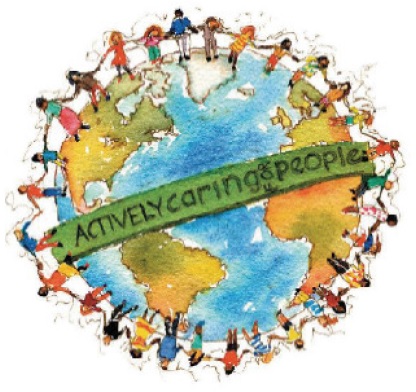What does actively caring for people (AC4P) mean in the workplace? Let’s consider the difference between “caring” and “acting”. No one wants to see an individual get injured on the job. This is caring. Yet, when workers are asked to muster the courage to offer advice to a peer who is working at-risk and could be injured, many admit they do not act on their caring by providing behavioral feedback. And even fewer workers act to show sincere appreciation for a co-worker’s safe behavior. Thus, it seems many employees do not actively care for people’s safety. They don’t go beyond reactive emotional caring and act to provide proactive injury-prevention feedback.
Many organizations assume that putting an observation process in place ensures employees will speak up when observing a co-worker’s at-risk behavior. But this is not the case. There is certainly value in peer-to-peer observations–safe and at-risk behaviors are recorded and hazards can be shared for useful awareness. But what about going a step further–reaching beyond observing and recording behaviors, and taking the time to provide immediate and caring feedback to ensure employees continue their safe behavior and stop their at-risk behavior.
Behavior-based safety should be less about the mechanics and more about interpersonal AC4P communication. Safety-related feedback is needed to support safe behavior and correct at-risk behavior. The process should be progressive and inspirational–people becoming each other’s brother/sister keeper.
Often AC4P training is needed to help people develop the confidence and competence to communicate effectively on behalf of the safety of others every day–on and off the job. Indeed, the most important component of an observation process is the delivery of one-to-one behavioral feedback–being directive for supportive feedback and nondirective for corrective feedback. Nondirective means you ask questions first and inspire ownership of the at-risk behavior and self-motivation to make the correction.
An actively-caring-for-people (AC4P) work culture is nurtured when people provide supportive feedback for desirable behavior–when they show genuine appreciation for people’s AC4P behavior. Unfortunately, expressing gratitude for another person’s safety-related behavior is not common nor even natural. Here’s a tool and a process to make this critical interpersonal exchange easier and more memorable.
The STEP Process
The STEP process – See, Thank, Enter, Pass – starts when individuals look for AC4P behavior from others (i.e., See) and show gratitude for that AC4P behavior with a green wristband (i.e., Thank) embossed with the words: “Actively Caring for People” and a unique identification number. The wristband recipient is requested to document this expression of gratitude (including the nature of the AC4P behavior) at the AC4P Website (www.ac4p.org), along with the wristband number. In this way, a recognition process is entered at the AC4P website and tracked worldwide (i.e., Enter) as positive AC4P communication. Then the wristband recipient is requested to look for AC4P behavior from another person and pass on the wristband (i.e., Pass).
This STEP process exemplifies a basic principle of applied behavioral science–supportive feedback–and motivates the recipient to repeat the AC4P behavior recognized and support the STEP process. Many AC4P behaviors support safety, from wearing PPE and removing a hazard to reporting a close call and helping a coworker complete a work task safely.
Documenting and reading the safety-support behaviors posted on the AC4P Website contributes to helping AC4P behavior become the norm. People see that acting beyond one’s self-serving interests to benefit others is more common than imagined. A culture of interpersonal trust, compassion, and routine AC4P behavior is nurtured.
However, the STEP process is easier said than done. Why, because observing and rewarding AC4P behavior is not part of our normal routines, even within our own families, let alone educational institutions, the workplace, and the community at large. Indeed, stopping a work crew to provide some supportive AC4P safety-related feedback is certainly not expected and may not be appreciated. And when walking a jobsite, supervisors and safety leaders do not normally look for desirable behavior to recognize, even though supportive feedback is the most effective way to improve both behavior and attitude at the same time.
The AC4P Wristband
Whenever this AC4P Movement is explained to others, it’s always appreciated; and whenever an AC4P wristband is offered, it’s always accepted with a sincere smile and worn with a sense of pride. In fact, we know many individuals who wear their AC4P wristband every day, and actually resist passing it on.
Imagine receiving an AC4P wristband from a colleague, safety manager, direct report, supervisor, coach, or teacher who gives a gracious and tactful description of the AC4P behavior that justified the special recognition. Such unexpected recognition is sure to be accepted with a pleasant surprise. In turn, this positive and unique encounter is bound to be shared with others. As these positive exchanges accumulate, people around you will take note and report positive vibes about the AC4P Movement. The AC4P Movement then spreads throughout the work culture, promoting actions that reflect an AC4P teaching/learning culture for injury prevention.
In Conclusion
This article illustrates the special value of actively care for the safety of yourself and those around you, and how you can bring this AC4P Movement to life in your workplace and cultivate a brother’s/sister’s keeper culture–a culture where injuries are prevented by interpersonal AC4P behavior-based feedback to support safe behavior and correct at-risk behavior. However, it takes courage to provide AC4P feedback for safety-related behavior. And, it takes more than common sense to do this correctly so the other individual accepts your feedback with sincere appreciation. A teaching/learning manual published by the American Society of Safety Professionals, entitled “Actively Caring for People’s Safety,” shows you how to make this happen. Plus, AC4P wristbands can be purchased at the AC4P Website, where more information about the worldwide AC4P Movement is available.
Krista S. Geller, Ph.D. President of GellerAC4P, Inc. Available for keynotes and AC4P training. Please visit www.ac4p.org and www.gellerac4p.com. Contact kgeller@vt.edu for more information.


Recent Comments